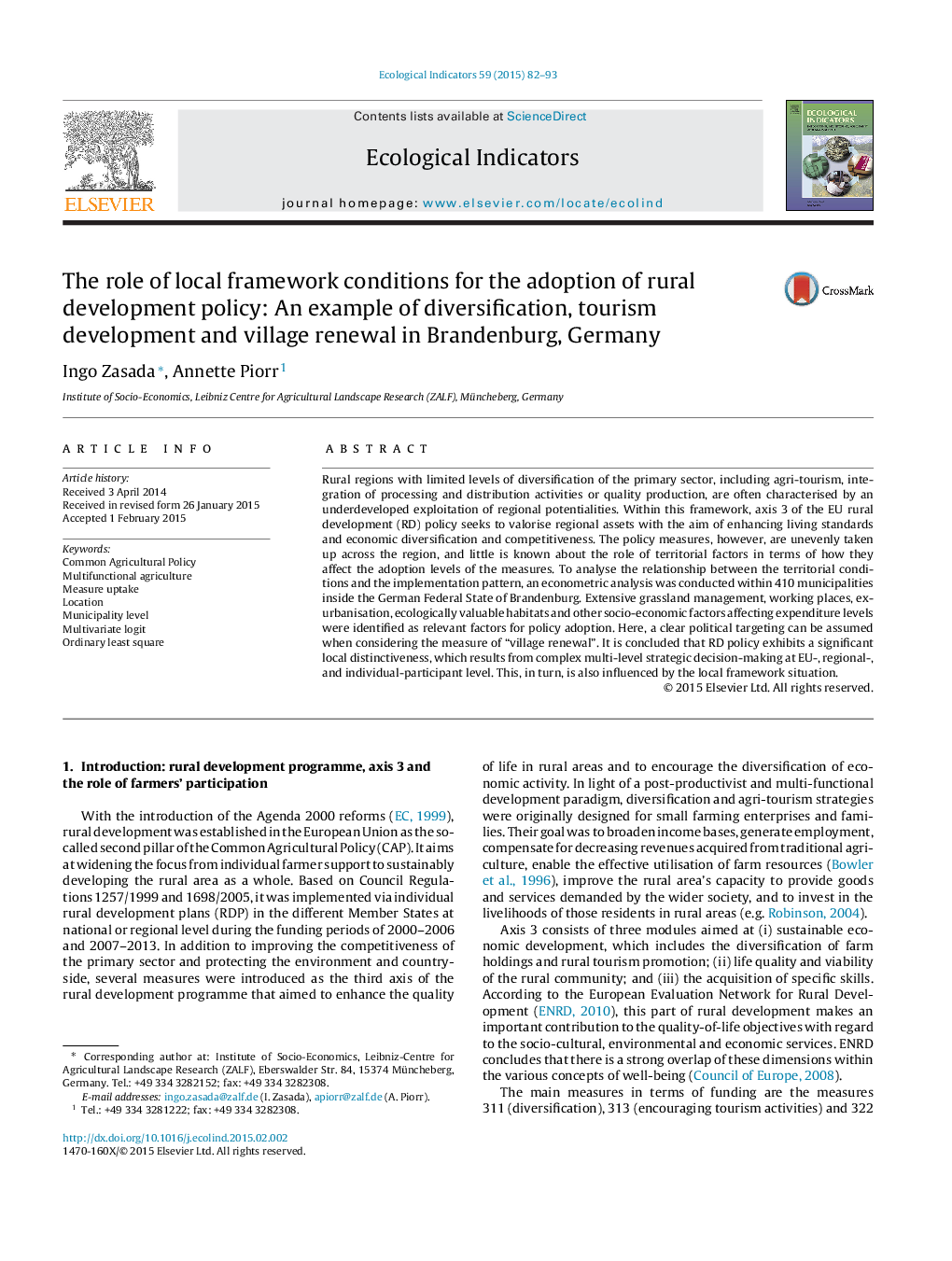| Article ID | Journal | Published Year | Pages | File Type |
|---|---|---|---|---|
| 4372973 | Ecological Indicators | 2015 | 12 Pages |
•We investigated the influence of local conditions on rural development policy implementation.•High spatial variability of measure participation and expenditure levels.•Eleven socio-economic, environmental and agricultural land use factors were identified.•Implementation pattern partly explained by the local framework conditions.
Rural regions with limited levels of diversification of the primary sector, including agri-tourism, integration of processing and distribution activities or quality production, are often characterised by an underdeveloped exploitation of regional potentialities. Within this framework, axis 3 of the EU rural development (RD) policy seeks to valorise regional assets with the aim of enhancing living standards and economic diversification and competitiveness. The policy measures, however, are unevenly taken up across the region, and little is known about the role of territorial factors in terms of how they affect the adoption levels of the measures. To analyse the relationship between the territorial conditions and the implementation pattern, an econometric analysis was conducted within 410 municipalities inside the German Federal State of Brandenburg. Extensive grassland management, working places, ex-urbanisation, ecologically valuable habitats and other socio-economic factors affecting expenditure levels were identified as relevant factors for policy adoption. Here, a clear political targeting can be assumed when considering the measure of “village renewal”. It is concluded that RD policy exhibits a significant local distinctiveness, which results from complex multi-level strategic decision-making at EU-, regional-, and individual-participant level. This, in turn, is also influenced by the local framework situation.
